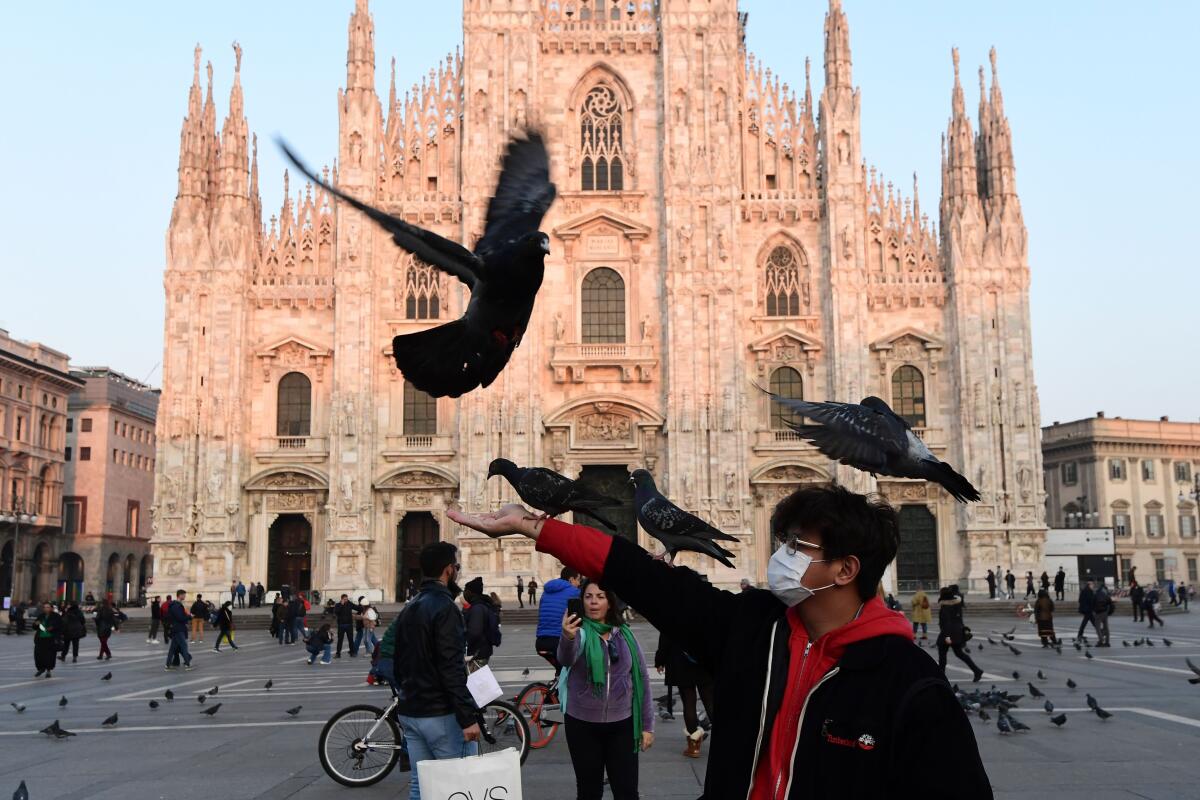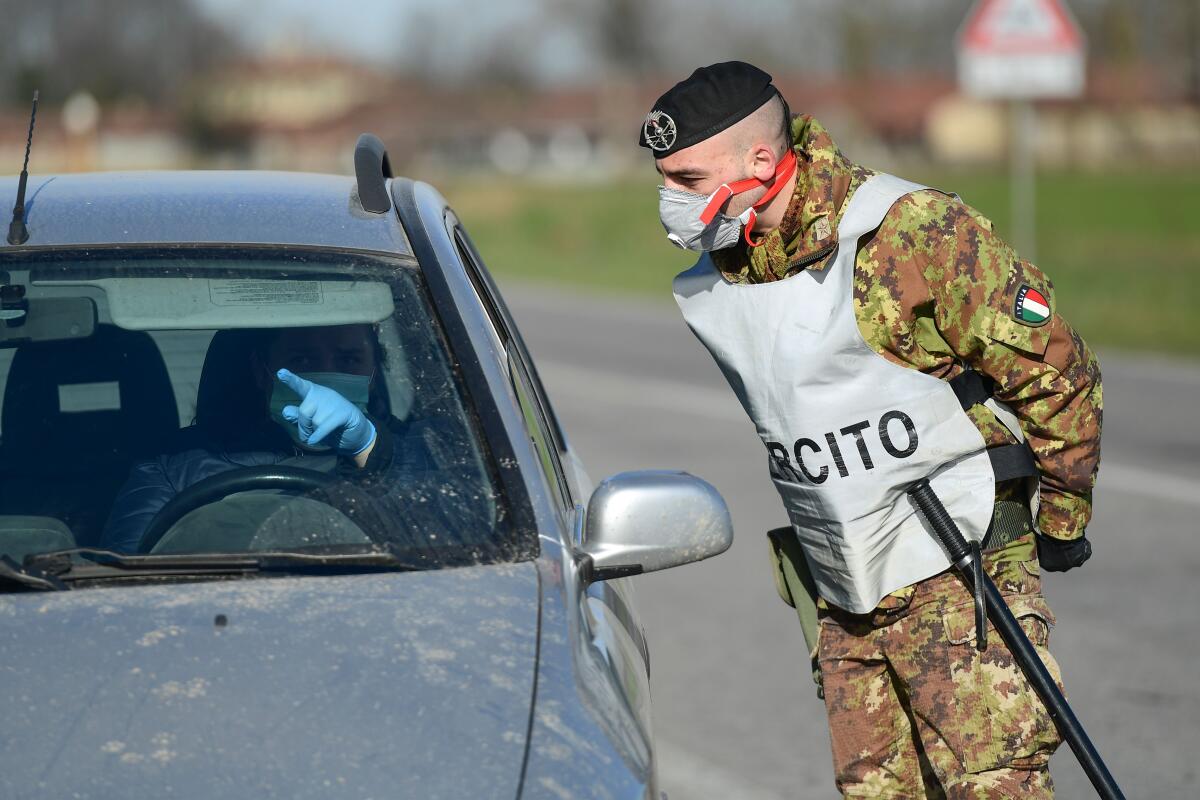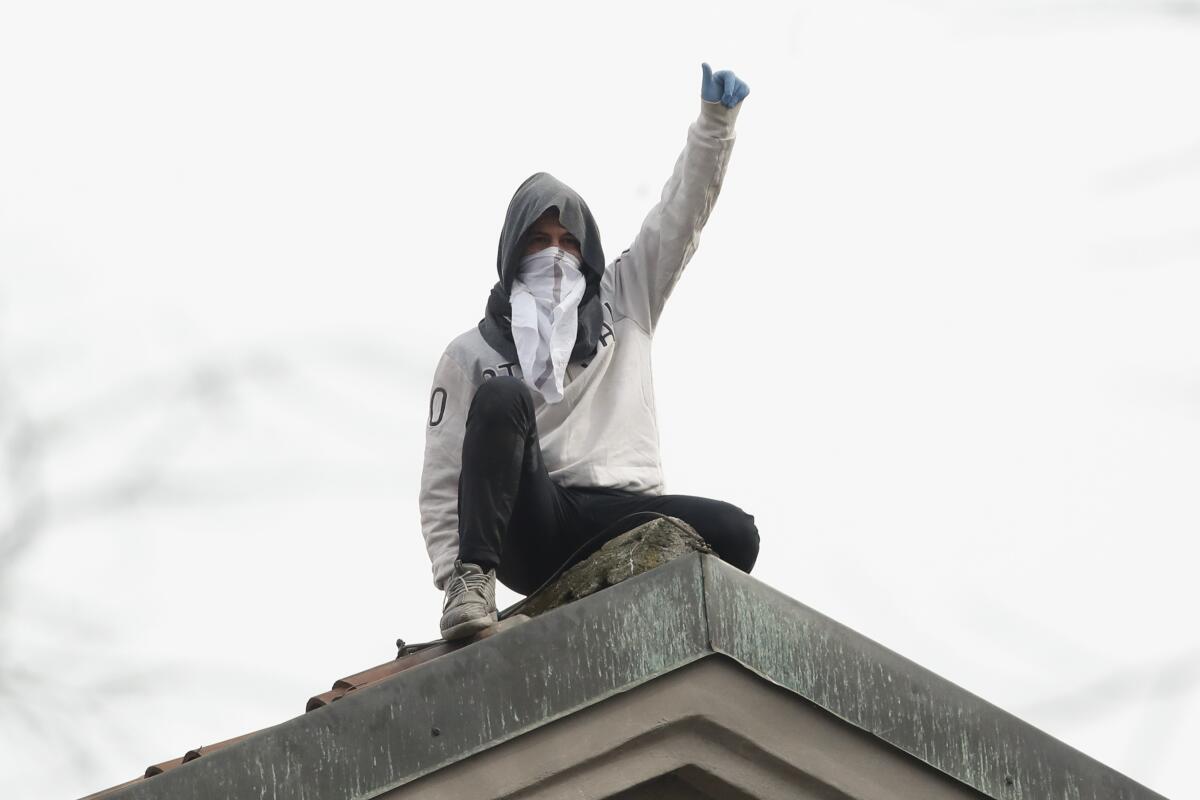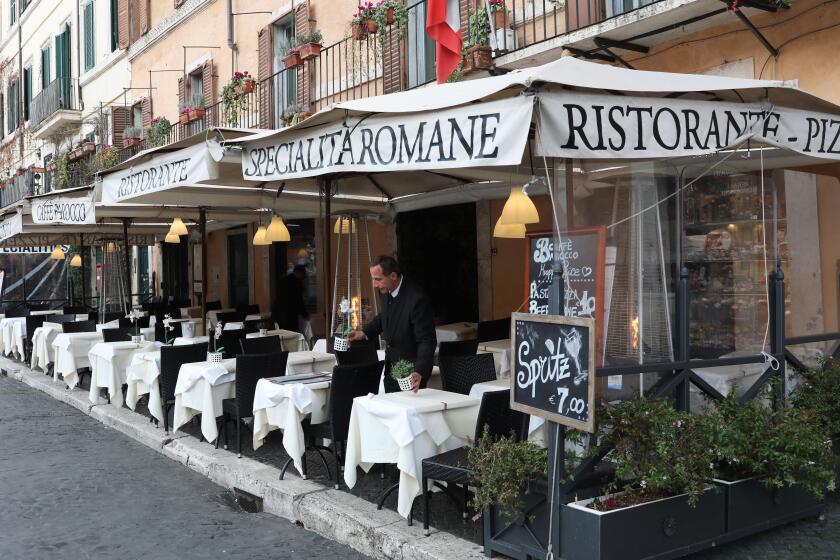Italy quarantines entire country of 60 million: Will Italians comply in face of coronavirus?

- Share via
ROME — Facing rising deaths from the coronavirus, and an increasingly anxious public, a beleaguered Italy has taken the unprecedented step of placing the entire country under quarantine, a sweeping gamble for a Western democracy that is confronting one of its most severe crises since World War II.
In a startling announcement on Monday, Prime Minister Giuseppe Conte said that all 60 million Italians would face limitations on movement beginning Tuesday. The news came as virus deaths climbed to 463, with total cases reaching 9,172, marking a record one day jump of 1,797 and confirming Italy as Europe’s hardest hit country.
“There is no time unfortunately,” Conte said in a hastily called news conference. “Our habits must change now and we must all give up something for the good of Italy.” He added, “I am about to sign a measure we can call ‘I stay at home.’”
That means from the Villa Borghese in Rome to the Uffizi Gallery in Florence, and from the canals of Venice to the soccer stadiums of Calabria, Italians, a people accustomed to crowding into cafes and strolling boulevards, will be forced to shrink their worlds. Whether they adhere, of course, is another question, but the virus has unnerved everyone from Pope Francis to the baritones and sopranos at Teatro alla Scala.

It was a stunning decree on a continent already agitated by rising right-wing populism and fears of economic downturns. The effect of Conte’s words — in a land that reveres the surrealist filmmaker Federico Fellini and where mistrust of the government runs high even in stable times — was immediate: Supermarkets in Rome and Naples were besieged by shoppers, despite promises from officials that supplies to shops would be guaranteed in coming days.
The measure extends the quarantine zone set up Sunday covering 16 million Italians living in the Lombardy region and 14 neighboring provinces in northern Italy, where the virus began its spread in February. Conte said the same rules for the north will now apply to all of Italy — people will only be able to travel for work, medical reasons or emergencies until April 3. They will face jail time or a fine if they seek to travel without good reason.
Streets in Milan, Italy’s financial hub and the main city in Lombardy, were unseasonably quiet. For the first time, checkpoints were set up at the city’s main train station to screen travelers, many of whom fled before the lockdown took effect. People at Milan Central Station were required to sign a police form, self-certifying why they were traveling.
“Until a few days ago, the thinking was the alarm would pass in some weeks, we just need to follow the rules. Now we need to explain to citizens that the situation is very, very serious, our hospitals are at the point of collapse,” the mayor of the Lombardy city of Bergamo, Giorgio Gori, told RAI state television.
More than 12,000 people have been infected in Italy. Containment measures that seemed unusually strict two weeks ago turned out to be not strict enough.
Such scenes may play out across the country: “There will no longer be a red zone, there will no longer be a zone one and two on the peninsula,” said Conte. “There will be Italy, a protected zone.”
The quarantine of an entire nation with 60 million inhabitants takes Italy beyond the shutdown of Wuhan and other cities in the Hubei province region of China, which involved 57 million people. The move comes as officials fear the virus is about to sweep through the capital, Rome, which has already seen a drop in tourism.
Italians will probably be able to travel in their localities, but all outdoor meetings will be banned as well as sporting events, including professional soccer games, until April 3. Conte also announced that all schools in Italy would close until that date, after previously ordering them shut until March 15.
“It’s not easy,” said Conte. “The right decision today is to stay at home. Our future is in our hands and they must be responsible hands. Everyone must do their part.”

During his news conference, Conte referred to scenes of young Italians who have continued to meet in crowded bars, despite government advice to Italians to stay one yard away from one another to avoid infection. Since the first Italian infected on Italian soil was identified in Codogno in Lombardy on Feb. 20, infections have soared with 733 people now in intensive care despite the set-up of an original quarantine zone around Codogno two weeks ago.
It is yet to be seen how flexible officials will be in defining an “emergency” that justifies travel from one area to another. Anarchy was on the minds of some. Rioting erupted in 27 Italian prisons in protest at the curtailing of visiting hours because of virus fears. Six inmates at Modena prison died after they broke into an infirmary and overdosed on methadone.
During a protest at Foggia jail in Puglia, 50 inmates staged a breakout, most of whom were quickly recaptured, while at Rome’s Regina Coeli jail, prisoners climbed onto the roof to protest as other set fire to mattresses.
Kington is a special correspondent. The Associated Press contributed to this report.
More to Read
Sign up for Essential California
The most important California stories and recommendations in your inbox every morning.
You may occasionally receive promotional content from the Los Angeles Times.











